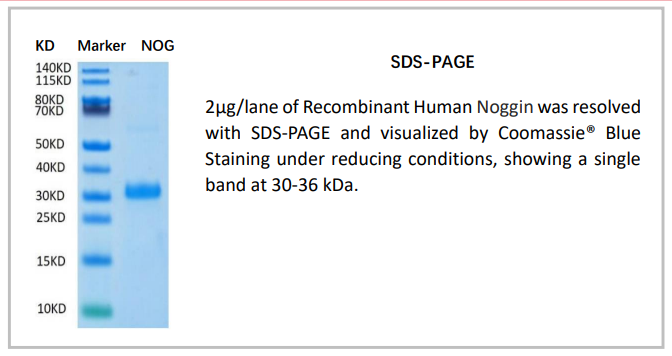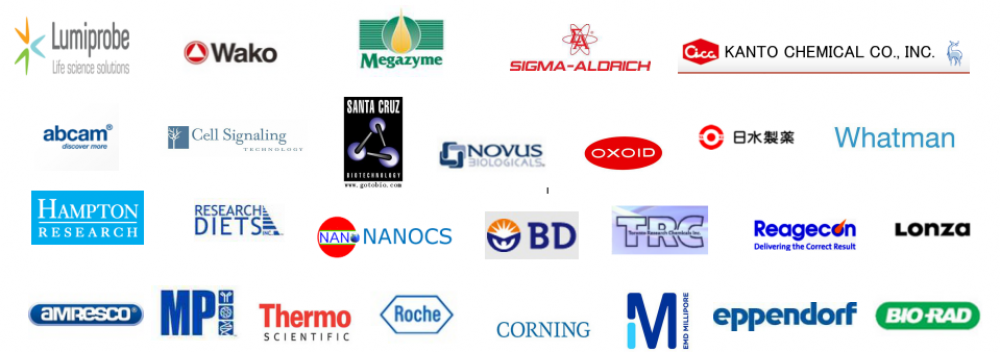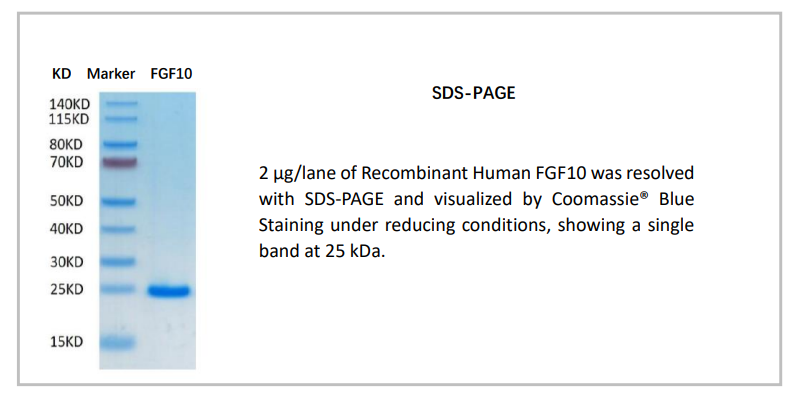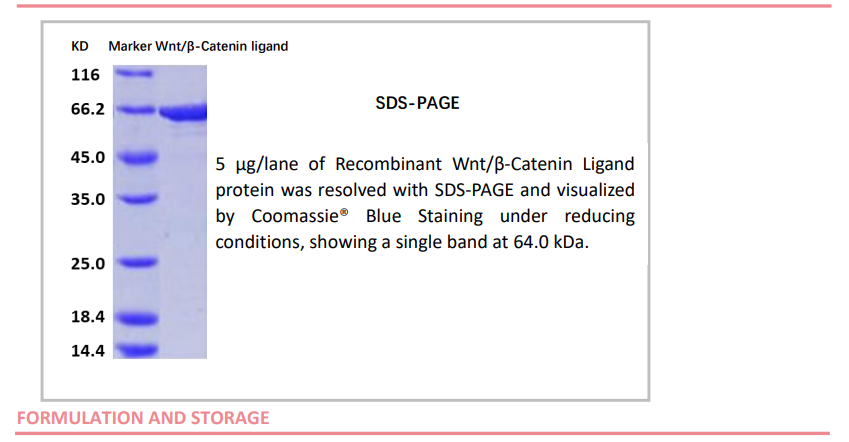Recombinant Human Noggin
货号:807-NOG
规格:1mg
100ug
品牌:OrganRegen
产品介绍
Background:
Noggin is a secreted homodimeric glycoprotein that is an antagonist of bone morphogenetic proteins (BMPs) [1] . Secreted Noggin probably remains close to the cell surface due to its binding of heparin‑containing proteoglycans. Noggin binds some BMPs such as BMP-4 with high affinity and others such as BMP-7 with lower affinity. It antagonizes BMP bioactivities by blocking epitopes on BMPs that are needed for binding to both type I and type II receptors [2]. During embryogenesis, Noggin antagonizes specific BMPs at defined times, for example, during neural tube, somite and cardiomyocyte growth and patterning. During skeletal development, Noggin prevents chondrocyte hyperplasia, thus allowing proper formation of joints [2] . Noggin is expressed in defined areas of the adult central nervous system and peripheral tissues such as lung, skeletal muscle and skin [3] . During culture of human embryonic stem cells (hESC) or neural stem cells under certain conditions, addition of Noggin to antagonize BMP activity may allow stem cells to proliferate while maintaining their undifferentiated state, or alternatively, to differentiate into dopaminergic neurons [4].
Source:
Chinese Hamster Ovary cell line
Protein Construction:
A DNA sequence encoding the amino acids (Gln28-Cys232) of human Noggin (Accession Number: Q13253) was expressed.
Synonyms:
NOG; SYM1; symphalangism 1 (proximal); synostoses (multiple) syndrome 1; SYNS1; SYNS1A Purity:
≥ 95%, by SDS-PAGE visualized with quantitative densitometry by Coomassie® Blue Staining.
Biological Activity:
Measured by its ability to inhibit recombinant human BMP4-induced alkaline phosphatase production by ATDC5 mouse chondrogenic cells. The ED50 for this effect is typically 0.05-0.3 μg/ml in the presence of 50 ng/ml of recombinant human BMP4.
Endotoxin Level:
<0.10 EU per 1 μg of the protein by the LAL method
Calculated Molecular Weight:
25.1 kDa
SDS-PAGE:
30-36 kDa, reducing conditions 
FORMULATION AND STORAGE
Formulation:
The product is Lyophilized from a 0.22 μm filtered solution in PBS.
Shipping:
The product is shipped on ice. Upon receipt, store it immediately at as methodsrecommended below.
Reconstitution:
Reconstitute in sterile PBS buffer containing 0.1 % BSA to a concentration of 0.1-1.0 mg/mL.
Stability & Storage:
24 months, -20 to -70 °C, under powder state;
12 months, -20 to -70 °C, under sterile conditions after reconstitution;
2 month, 2 to 8 °C under sterile conditions after reconstitution; avoid repeated freeze-thaw cycles.
References:
-
J, G., et al., Structural basis of BMP signalling inhibition by the cystine knot protein Noggin. Nature, 2002. 420(6916): p. 636-42.
-
Brunet, L.J., et al., Noggin, cartilage morphogenesis, and joint formation in the mammalian skeleton. Science, 1998. 280(5368): p. 1455-7.
-
Bonaguidi, M.A., et al., Noggin expands neural stem cells in the adult hippocampus. J Neurosci, 2008. 28(37): p. 9194-204.
-
Xu, R.H., et al., Basic FGF and suppression of BMP signaling sustain undifferentiated proliferation of human ES cells. Nat Methods, 2005. 2(3): p. 185-90.





